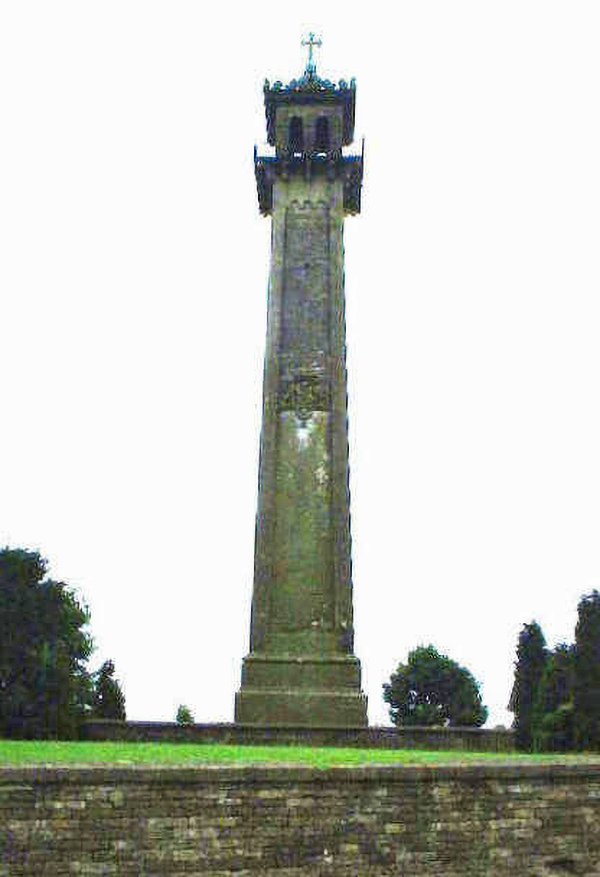 |
|
|
|
|
 |
|
|
|
|
Hawkesbury Monument Hawkesbury Monument as it is known in the village, or given its correct name The Lord Robert Somerset Memorial Tower, It was erected by local masons in 1846 to commemorate General Robert Edward Henry Somerset. The Tower is topped by a 7 foot high gilded cross, In 1887 Hawkesbury experienced severe gales and the cross was blown to the ground another was ordered and brought from Badminton by cart followed by the local children. It used to be open for visitors when for a small cost you could climb the stone spiral staircase to the top some 144 steps and then what a sight to behold on a clear day seven counties could be seen. The lodge sold refreshments and the green surrounding the tower was a favorite for picnics, the accommodation at the lodge was in the favor of the duke of Beaufort and was usually given to a pensioner from the estate, among the keepers were Alliffs and Boultons.
SOMERSET, LORD ROBERT EDWARD HENRY A.D.C KC.B G.C.B (1776—1842) A british soldier, he was the third son of the 5th duke of Beaufort, and elder brother of Lord Raglan. Joining the 15th Light Dragoons in 1793, he became captain in the following year, and received a majority after serving as aide-de-camp to the duke of York in the Dutch expedition of 1799. At the end of 1800 he became a lieutenant-colonel, and in 1801 received the command of the 4th Light Dragoons. From 1799 to 1802 he represented the Monmouth boroughs in the House of Commons, and from 1803 to 1823 sat for Gloucestershire. He commanded his regiment at the battles of Talavera and Busaco, and in 1810 received a colonelcy and the appointment of A.D.C. to the king. In 1811, along with the 3rd Dragoon Guards, the 4th Light Dragoons fought a notable cavalry action at Usagre, and in 1812 Lord Edward Somerset was engaged in the great charge of Le Marchant’s heavy cavalry at ,Salamanca. His conduct on this occasion (he captured five guns at the head of a single squadron) won him further promotion, and he made the remaining campaigns as a major-general at the head of the Hussar brigade (7th, Ioth and 15th Hussars). At Orthes he won further distinction by his pursuit of the enemy; he was made K.C.B., and received the thanks of parliament. At Waterloo he was in command of the Household Cavalry Brigade, which distinguished itself not less by its stern and patient endurance of the enemy’s fire than by its celebrated charge on the cuirassiers of Milhaud’s corps. The brigadier was particularly mentioned in Wellington’s despatches, and received the thanks of parliament as well as the Maria Theresa and other much-prized foreign orders. He died a general and G.C.B. in 1842.
 |
||
|